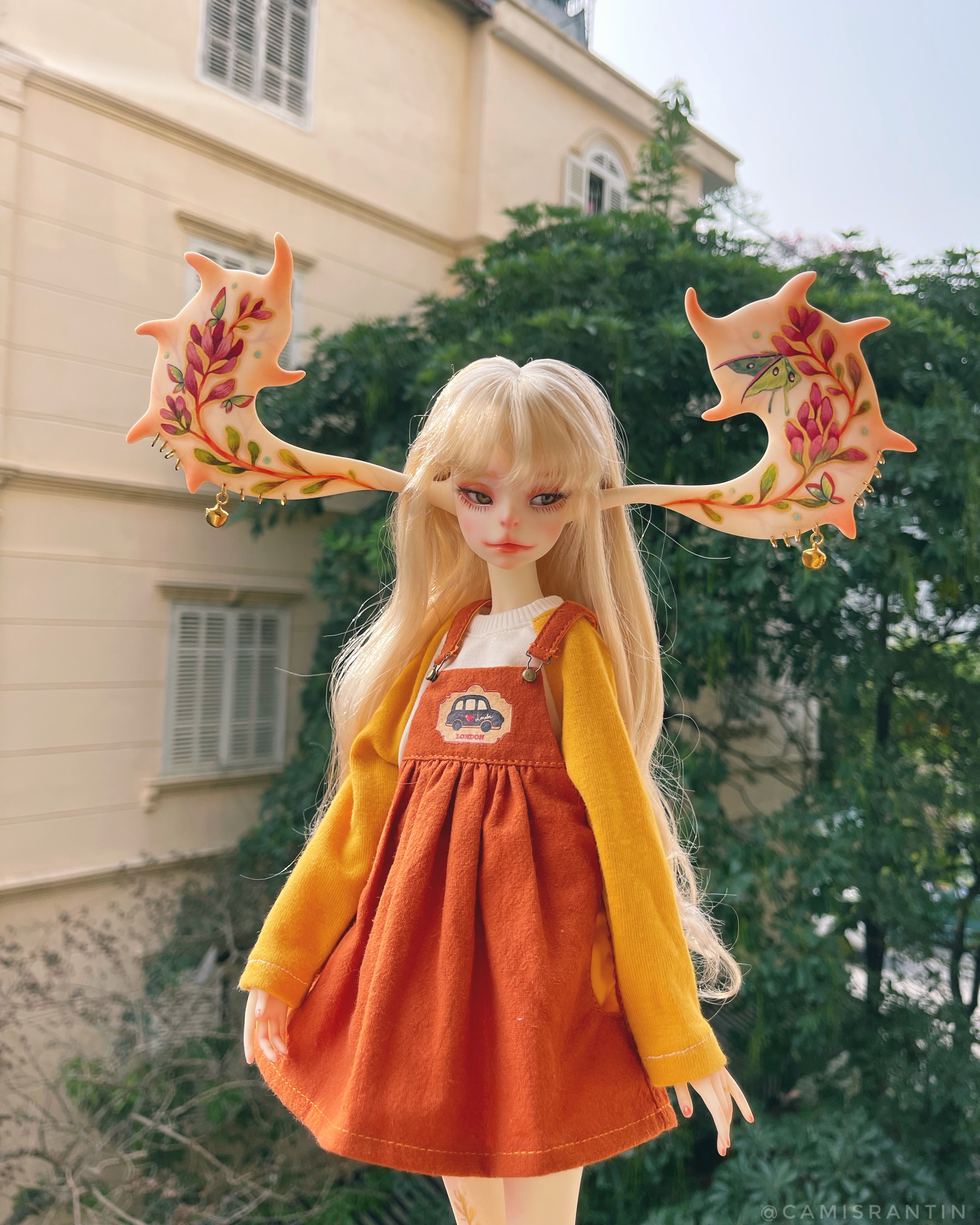Hi, I think we’ve already know this issue about BJD – Yellowing. There are concerns and opinions left and right about this problem that might confuse new players, so I’m here to sum up information about yellowing and explain you why yellowing in BJD is not scary.
First, what is yellowing? Yellowing is the oxidization procress in resin, in short, it’s when resin aged. To begin with, polyurethane synthetic resin, specifically Methyl methacrylate is the materials behind BJD, though it varies from quality and formula between brands, resin is toxic in its liquid and micro dust form and once cured, it’s hard, dense and it keeps heat for a short time. To get it an easy way, it’s a type of durable, seamless and waterproof plastic used for display pieces.
Given that fact, resin is just another type of plastic, and like all plastic do, they age. Once the resin is cured, it react to UV light and heat overtime (like most things on earth do, including us human) and the most noticeable changes is in respect of colors. Besides UV light, heat exposure also contribute to resin’s aging process, thus, even fluorescent lights and temperature changes can effect resin. That said, the outcome of resin overtime is inevitable and even transparent resin will eventually gained a yellow hue, however, there are things that can be done to the chemical make-up of the resin formula to mitigate this.
1. UV Stablilizer
By far in the BJD hobby, UV stabilizer in the resin’s formula works the best at minimalizing the appearance of resin’s aging process. UV Stabilizer only helps delaying the process of yellowing in resin, not entirely stops it. On average, many midrange and upper range BJD companies have cooperated UV Stabilizer into their resin, creating better quality dolls since UVS not only helps slowing yellowing, it also support the resin with less cracking, chipping and crisping. In result, most BJD are now in much more durable than BJD of 7-10 years ago. General speaking, with the help of UV Stabilizer, bjd can go 1-2 years with frequen light exposure without drastic color changes/ discoloration.

Harucasting is well-know for using UV Stabilizer in their bjd.
2. UV Spray
One of the method that most BJD players opt to is using UV sealant, and MSC UV-cut is the most popular sealant to be used. UV spray acts like a thin coat of amor to BJD, helping it fight with yellowing more. From my experience, UV spray helps.

Our trusty MSC UV cut Flat
3. Storage
Another effective method that many BJD collectors use it to store/display BJD in complete dark space/room. This is definitely an effective way to deal with yellowing since there’s no light exposure to the doll. If you wanted to still be able to display your dolls in cabinets, go for UV Glass instead of normal Glass to maximize the protection.

UV sticker for glass doors
So is yellowing scary after all? No. It’s inevitable, we can slow it down but we can’t stop it, however, great news is they won’t turn too bad (depends on the quality ofc), they will mellowed to a certain point and stop. Some resin color might react different overtime, like tan resin or colorful ones. I understand that some resin once yellowed gave off a very unpleasant green hue, but that’s also unavoidable. Albeit, I think that most yellowing cases can be fixed easily with blushing, or in severe cases, sanding and oxy bath will do the trick.
Lastly, yellowing is normal. It’s like us human aging, instead of worrying about it, enjoy it when it lasted 💖


Leave a comment